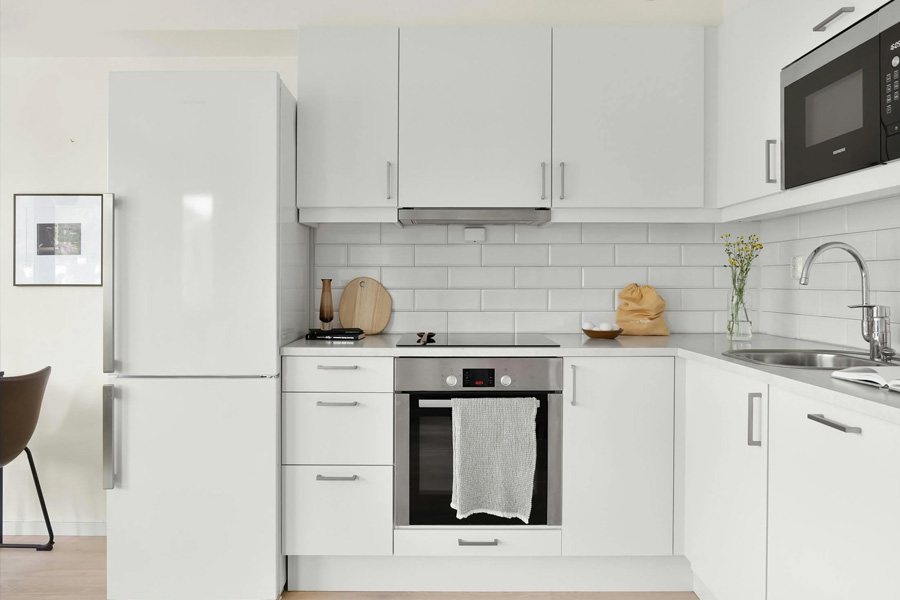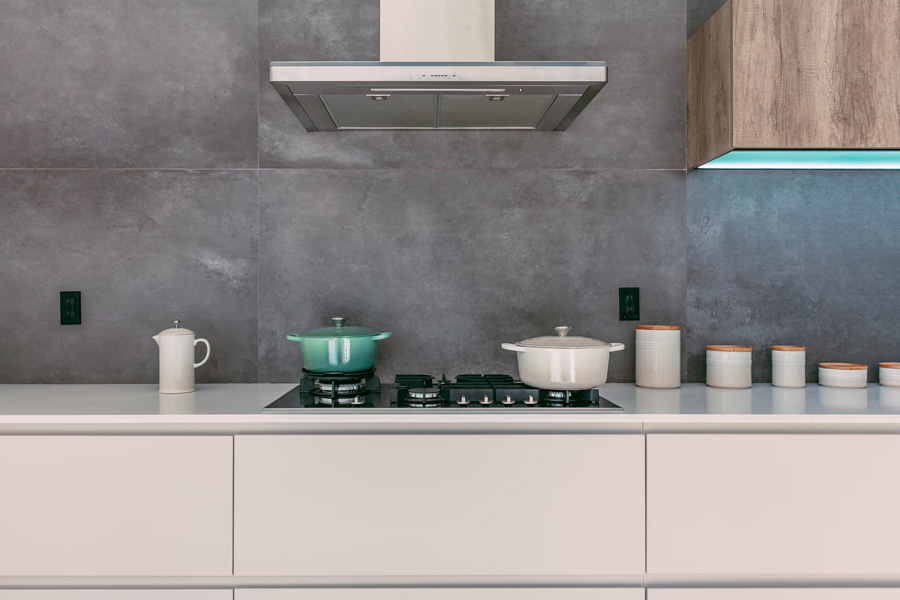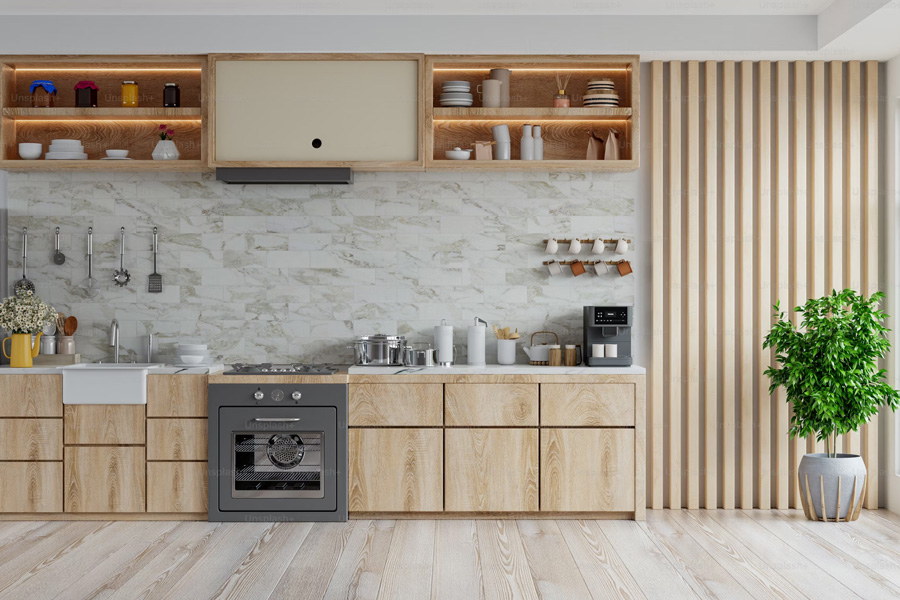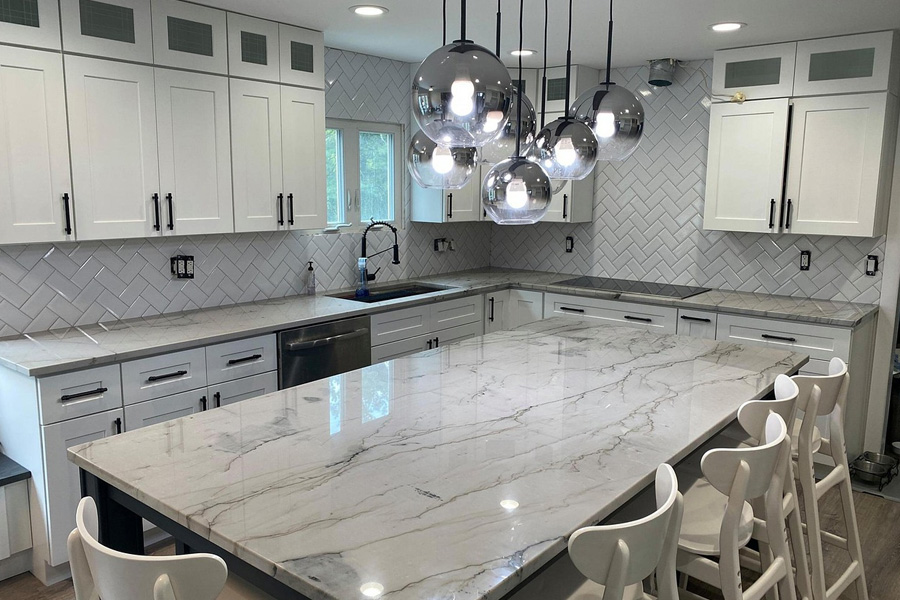Designing a Green Kitchen: Sustainable Solutions for Eco-Friendly Living

An all-white kitchen after remodeling
As environmental concerns continue to rise, more homeowners are seeking ways to reduce their carbon footprint and adopt eco-friendly practices in their daily lives. When it comes to home design, the kitchen is a prime area for incorporating sustainable solutions. Whether you’re embarking on a full-scale kitchen renovation or making gradual changes, designing a green kitchen not only promotes eco-conscious living but also contributes to a healthier planet.
This post explores a variety of sustainable strategies and innovative ideas to transform your kitchen into a beacon of environmental responsibility.
The Need for an Eco-Friendly Kitchen in Households

A kitchen with a grey tile backdrop
In today’s world, the urgency of adopting eco-friendly practices cannot be overstated. The kitchen, as the heart of the home, plays a pivotal role in sustainability efforts. With rising concerns about climate change, resource depletion, and pollution, transitioning to an eco-friendly kitchen is essential for households worldwide. By reducing energy and water consumption, minimizing waste generation, and opting for sustainable materials and practices, households can significantly lessen their environmental impact. Moreover, embracing an eco-friendly kitchen ethos promotes healthier living environments, fosters responsible consumption habits, and sets a positive example for future generations. From conserving natural resources to mitigating greenhouse gas emissions, the shift towards eco-friendly kitchens is not just a trend but a necessary step towards a more sustainable and resilient future for our planet and its inhabitants.
Ways to Design an Eco-Friendly Kitchen
1. Energy-Efficient Appliances
One of the most impactful steps you can take in designing a green kitchen is to invest in energy-efficient appliances. When shopping for new appliances during your kitchen renovation, look for products with high Energy Star ratings, indicating superior energy efficiency. Opt for refrigerators, dishwashers, ovens, and cooktops that consume less energy while still meeting your household’s needs. These appliances not only reduce your carbon footprint but also lower utility bills in the long run.
2. Water-Saving Fixtures
Conserving water is another essential aspect of sustainable kitchen design. Install low-flow faucets and aerators to minimize water consumption during dishwashing and food preparation. Consider upgrading to a water-efficient dishwasher that uses less water per cycle while still delivering sparkling-clean results. Additionally, incorporating a water filtration system eliminates the need for single-use plastic water bottles, further reducing environmental impact.
3. Sustainable Materials
Choose eco-friendly materials for your kitchen renovation to minimize environmental impact and promote sustainability. Opt for cabinets made from certified sustainable wood or reclaimed timber, which reduces the demand for virgin timber and supports responsible forestry practices. Consider countertops crafted from recycled glass, bamboo, or composite materials made from recycled paper or plastic. These materials not only offer durability and aesthetic appeal but also align with your green living goals.
4. Natural Lighting and Ventilation

A kitchen with natural lighting from windows
Maximize natural lighting and ventilation in your kitchen to reduce reliance on artificial lighting and mechanical ventilation systems. During your kitchen renovation, strategically position windows, skylights, and solar tubes to harness natural sunlight and illuminate your space. Install operable windows or vents to facilitate cross-ventilation and passive cooling, reducing the need for air conditioning and promoting indoor air quality.
5. Composting and Recycling Stations
Integrate dedicated composting and recycling stations into your kitchen layout to minimize waste and promote sustainable practices. Designate separate bins for organic waste, recyclables, and non-recyclable items, making it easy for household members to sort and dispose of waste responsibly. Consider incorporating built-in compost bins or worm composting systems to transform food scraps into nutrient-rich compost for your garden.
6. Efficient Lighting and Smart Controls

A kitchen with eco-friendly lighting fixtures
Opt for energy-efficient lighting fixtures such as LED bulbs and fixtures with motion sensors or dimmers to minimize electricity consumption in your kitchen. During your kitchen renovation, install smart lighting controls and programmable thermostats that allow you to adjust lighting levels and temperature settings according to your needs and schedule. By optimizing energy usage, you can reduce both your environmental impact and utility bills.
Final Thoughts
Designing a green kitchen is not only a reflection of your commitment to eco-friendly living but also a practical way to reduce your environmental footprint and promote sustainability. Whether you’re embarking on a kitchen renovation or implementing gradual changes, incorporating energy-efficient appliances, water-saving fixtures, sustainable materials, and eco-friendly practices can transform your kitchen into a model of environmental responsibility.
Experience the Joy of a Sustainable and Eco-Friendly Kitchen with Renovation Services from Oakridge Remodeling and Handyman Services
Transform your kitchen into a sustainable haven with Oakridge Remodeling and Handyman Services, specializing in modern kitchen remodeling and eco-friendly renovations in Regina. Experience the joy of a greener home with their expert team. Contact them for luxury kitchen renovations and custom bathroom remodeling services in Regina today!




